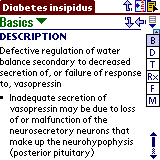What does the future hold for computers in healthcare for 2003? The crystal ball foretells:
Seven Key Physician Market Trends in 2003
· ROBUST PRACTICE WEB SITES EMERGE: Among all U.S. practicing physicians, 34% reported having a practice Web site in 2002. More than two-thirds of US physicians expressed an interest in having a Web site in the future. Data from the latest Cybercitizen®
Health research show a dramatic increase in the consumer use of practice Web sites,demonstrating a strong value proposition to physician end users.
· PDA AND HANDHELD COMPUTERS COME OF AGE: Approximately 35% of practicing physicians are actively using a PDA. Almost two-thirds of physicians using a PDA are actively using an Rx reference database on their PDA. In addition to the increased adoption of these mobile devices in general, improvements in the form factor and underlying technology, as well as the competitive pricing of new Windows devices, will drive significant growth and value in this market segment.
· INTEGRATED ELECTRONIC PHARMACEUTICAL DETAILING BECOMES A
REALITY: Thirty-six percent of primary care physicians have already participated inelectronic detailing programs offered by pharmaceutical companies. More than 80% expect of current users expect to participate in the next 12 months. The difference in 2003 will be a growing number of pharmaceutical companies realize the value of integrating the detail rep with extended online capabilities – as a compliment (and not a replacement) to the relationship.
· SOME SPECIALISTS BECOME VERY DEPENDENT ON THE WEB: Targeted segments of practicing physicians, such as information intensive groups including Oncologists, Neurologists, and Rheumatologists, become very dependent on the Web in 2003 as a critical source for the latest clinical news and pharmaceutical information.
· PATIENT CONNECTIVITY STILL ON HOLD: Despite consumer demand to “connect” with their physicians online, the evolution of the virtual online consult remains in a holding pattern as a majority of physicians are still waiting for an economic argument to participate.
However, pilot projects underway (funded by insurers in many cases) will begin to justify the value proposition to the payer community – in turn generating a greater general understanding of the offline impact of online consults.
· HEALTH PLAN PORTALS BECOME A VIABLE CUSTOMER SERVICE OPTION:
Following years of building online service solutions, and spurred by pending HIPAA deadlines, a majority of health plans finally deliver valued-added online solutions to participating providers in their physician networks. Building on administrative applications, early innovators also begin to roll out the first edition of e-care applications to support comprehensive patient care.
· E-PRESCRIBING RESURFACES … UNDER NEW MANAGEMENT: After a very tough
year, electronic prescribing makes a comeback with new backers. After a failed attempt by umerous pharmaceutical companies to gain control over the prescribing process at the point f care (through third party investments), the true beneficiaries of electronic prescribing insurers and PBMs) begin investing in more projects to demonstrate and capture the economic benefit (such as increased Rx formulary compliance).
source:
manhattanResearch

 What's new in the Palm Medical PDA World? Skyscape has come out with 5 Minute Clinical Consult 2003 and it is not 2003 yet! Looks like a major revamp. Images now optional.:
What's new in the Palm Medical PDA World? Skyscape has come out with 5 Minute Clinical Consult 2003 and it is not 2003 yet! Looks like a major revamp. Images now optional.:
 "
"
 A2Z Drugs
A2Z Drugs 